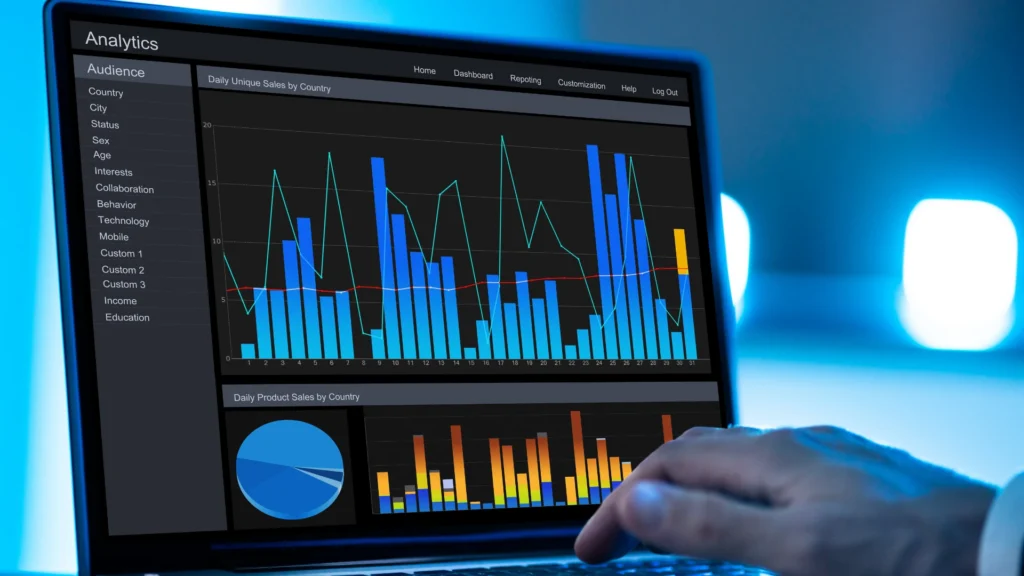
How to Leverage Data Analytics to Drive Business Growth in 2025
2025 is shaping up to be a landmark year. Businesses are on the cusp of an information revolution, and at the heart of it? Data. Mountains of it. But raw data is just noise; the music comes from data analytics. Understanding and leveraging data is no longer optional for any enterprise aiming for serious data-driven business growth. It’s the main event. An analytics-driven culture is the new frontier for companies looking to get ahead and stay there.
Why Data Analytics is Crucial for Business Growth
So, why all the fuss about data analytics? Simply put, it’s the most transparent lens a company has to view its operations, customers, and the market. In a world of information, analytics provides the pathway from overwhelming numbers to actionable business insights. A solid business strategy for 2025 absolutely must incorporate robust data analysis. Companies using data for ROI typically see substantial improvements across their entire operation. An organization that understands its data possesses a decisive advantage.

Improve Sales and Revenue Forecasting
Imagine knowing, with a higher degree of certainty, what your sales figures will look like next quarter, or even next year. Companies can develop more accurate sales and revenue forecasts using historical data, market trends, and sophisticated algorithms. Real-time business intelligence supplies teams with the information they need, precisely when needed. Such foresight allows for better resource allocation, inventory planning, and strategic financial decisions. Accurate forecasts provide a solid foundation for sustainable expansion.

Optimize Inventory and Supply Chain Management
Inventory and supply chain operations are complex beasts, full of moving parts and potential bottlenecks. A hiccup in one area can ripple outwards, causing delays and inflating costs. Data analytics offers a way to tame this complexity. Companies can track goods, identify inefficiencies, and predict demand fluctuations. Enterprise data platforms play a significant part here, offering a unified view of the supply chain. Performance optimization becomes achievable, leading to reduced waste, lower storage costs, and happier customers who get what they want, when they want it. Fine-tuning these processes contributes directly to the bottom line.
Make Smarter Marketing Decisions
The days of scattergun marketing are over. Today’s consumers expect personalization, and data analytics is the key to delivering it. Gaining deep customer insights means understanding their preferences, behaviors, and pain points. Marketing analytics tools help segment audiences and measure campaign effectiveness with incredible precision. Businesses can identify which channels deliver the best results, optimizing spend and improving engagement. An approach informed by data leads to more resonant campaigns and a stronger connection with the target audience.

Increase Operational Efficiency
Beyond specific departments like sales or marketing, data analytics contributes to overall operational efficiency. It’s looking at the entire business machine and finding ways for it to run smoother. Identifying areas of waste, streamlining workflows, and improving resource deployment are all benefits. Performance optimization, guided by data, can uncover hidden opportunities for improvement. When processes are efficient, costs decrease, productivity increases, and the business is more agile, ready to respond to market changes. Actionable business insights derived from operational data are invaluable.
Tools and Platforms to Empower Your Analytics Strategy
To truly harness data, you need the right toolkit. The market offers many solutions, from comprehensive enterprise data platforms to specialized BI tools for growth. AI in business analytics is becoming increasingly prevalent, automating complex analyses and uncovering deeper patterns. Data visualization tools are also essential, transforming complex datasets into understandable charts and dashboards. A critical component, however, is data literacy. Your team needs the skills to interpret data and use these platforms effectively. Equipping your workforce with these capabilities is a sound investment.

Top Areas Where Data Analytics Fuels Growth
Looking ahead to 2025 analytics trends, data analytics will remain a prime mover for business expansion. Personalized customer experiences, driven by deep data dives, will become even more critical. Predictive maintenance in industries with heavy machinery will minimize downtime. Dynamic pricing strategies, reacting in real time to market conditions, will become more common. Furthermore, developing new products and services, informed by granular market analysis and customer feedback loops, presents growth potential. Companies agile enough to adopt these trends will find themselves well-positioned. The rewards, in terms of growth and a competitive edge, are well worth the endeavor.


